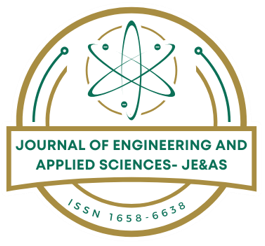| Original Research Received: 23 Oct 2021, Accepted: 25 Nov 2021, | ||||||||||||||||||||||||||||||
Investigation Of The Reference Korean Man Radiography Using Different Build Up Factor Models Abdulrahman A. Alfuraih. SUPPLEMENTARY FILES :
| ||||||||||||||||||||||||||||||
| How to Cite this Article |
| Pubmed Style Abdulrahman A. Alfuraih. Investigation Of The Reference Korean Man Radiography Using Different Build Up Factor Models. Journal of Engineering and Applied Sciences. 2021; 8(2): 37-44. doi:10.5455/jeas.2021110104 Web Style Abdulrahman A. Alfuraih. Investigation Of The Reference Korean Man Radiography Using Different Build Up Factor Models. https://jecasmu.org/?mno=135259 [Access: September 15, 2025]. doi:10.5455/jeas.2021110104 AMA (American Medical Association) Style Abdulrahman A. Alfuraih. Investigation Of The Reference Korean Man Radiography Using Different Build Up Factor Models. Journal of Engineering and Applied Sciences. 2021; 8(2): 37-44. doi:10.5455/jeas.2021110104 Vancouver/ICMJE Style Abdulrahman A. Alfuraih. Investigation Of The Reference Korean Man Radiography Using Different Build Up Factor Models. Journal of Engineering and Applied Sciences. (2021), [cited September 15, 2025]; 8(2): 37-44. doi:10.5455/jeas.2021110104 Harvard Style Abdulrahman A. Alfuraih (2021) Investigation Of The Reference Korean Man Radiography Using Different Build Up Factor Models. Journal of Engineering and Applied Sciences, 8 (2), 37-44. doi:10.5455/jeas.2021110104 Turabian Style Abdulrahman A. Alfuraih. 2021. Investigation Of The Reference Korean Man Radiography Using Different Build Up Factor Models. Journal of Engineering and Applied Sciences, 8 (2), 37-44. doi:10.5455/jeas.2021110104 Chicago Style Abdulrahman A. Alfuraih. "Investigation Of The Reference Korean Man Radiography Using Different Build Up Factor Models." Journal of Engineering and Applied Sciences 8 (2021), 37-44. doi:10.5455/jeas.2021110104 MLA (The Modern Language Association) Style Abdulrahman A. Alfuraih. "Investigation Of The Reference Korean Man Radiography Using Different Build Up Factor Models." Journal of Engineering and Applied Sciences 8.2 (2021), 37-44. Print. doi:10.5455/jeas.2021110104 APA (American Psychological Association) Style Abdulrahman A. Alfuraih (2021) Investigation Of The Reference Korean Man Radiography Using Different Build Up Factor Models. Journal of Engineering and Applied Sciences, 8 (2), 37-44. doi:10.5455/jeas.2021110104 |
 Submit Article
Submit Article - Author Login
- Reviewer Login
- About Publisher
- Peer Review Policy
- Author's Rights and Obligations
- Publication Ethics and Publication Malpractice Statement
- Conflict of Interest Policy
- Plagiarism Policy
- Protection of Research Participants (Statement On Human And Animal Rights)
- Privacy Policy
- Corrections, Retractions & Expressions of Concern
- Self-Archiving Policies
- Statement of Informed Consent
- Terms of Use
- License Information
- Copyright Information
- Statement on the Use of Generative AI
- ISSN: 1658-6638 (print)
- ISSN: 1658-7073 (electronic)

